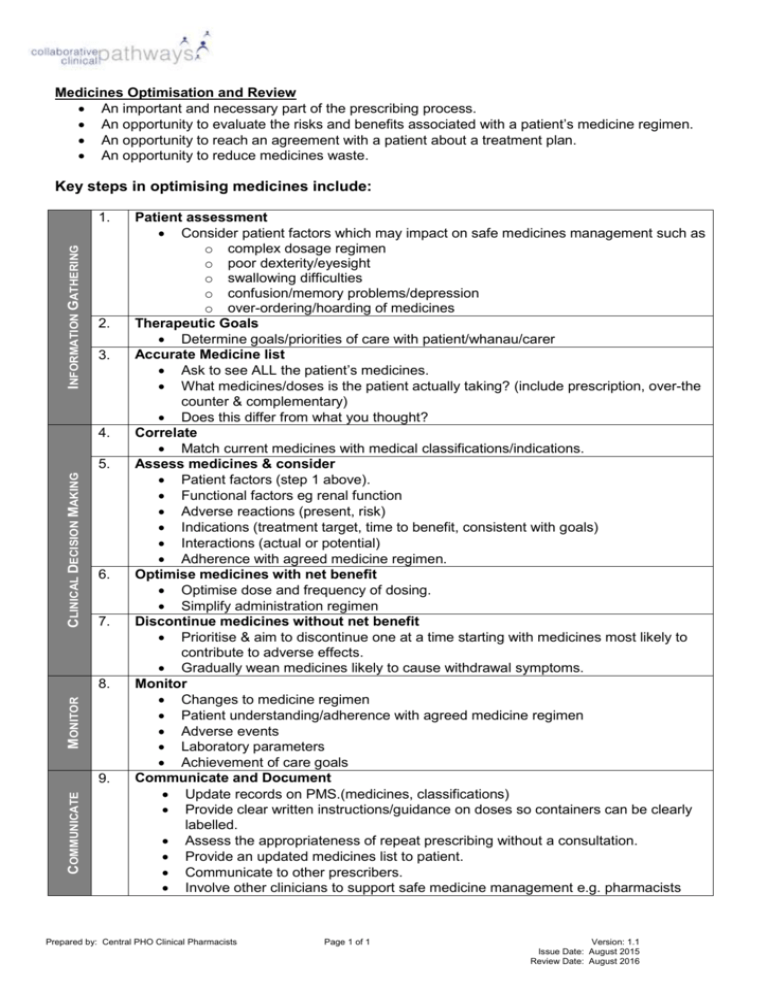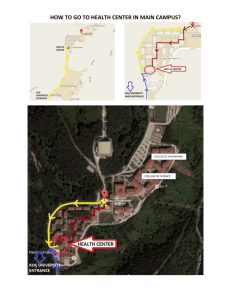Medicines Review
advertisement

Medicines Optimisation and Review An important and necessary part of the prescribing process. An opportunity to evaluate the risks and benefits associated with a patient’s medicine regimen. An opportunity to reach an agreement with a patient about a treatment plan. An opportunity to reduce medicines waste. Key steps in optimising medicines include: INFORMATION GATHERING 1. 2. 3. 4. CLINICAL DECISION MAKING 5. 6. 7. MONITOR 8. COMMUNICATE 9. Patient assessment Consider patient factors which may impact on safe medicines management such as o complex dosage regimen o poor dexterity/eyesight o swallowing difficulties o confusion/memory problems/depression o over-ordering/hoarding of medicines Therapeutic Goals Determine goals/priorities of care with patient/whanau/carer Accurate Medicine list Ask to see ALL the patient’s medicines. What medicines/doses is the patient actually taking? (include prescription, over-the counter & complementary) Does this differ from what you thought? Correlate Match current medicines with medical classifications/indications. Assess medicines & consider Patient factors (step 1 above). Functional factors eg renal function Adverse reactions (present, risk) Indications (treatment target, time to benefit, consistent with goals) Interactions (actual or potential) Adherence with agreed medicine regimen. Optimise medicines with net benefit Optimise dose and frequency of dosing. Simplify administration regimen Discontinue medicines without net benefit Prioritise & aim to discontinue one at a time starting with medicines most likely to contribute to adverse effects. Gradually wean medicines likely to cause withdrawal symptoms. Monitor Changes to medicine regimen Patient understanding/adherence with agreed medicine regimen Adverse events Laboratory parameters Achievement of care goals Communicate and Document Update records on PMS.(medicines, classifications) Provide clear written instructions/guidance on doses so containers can be clearly labelled. Assess the appropriateness of repeat prescribing without a consultation. Provide an updated medicines list to patient. Communicate to other prescribers. Involve other clinicians to support safe medicine management e.g. pharmacists Prepared by: Central PHO Clinical Pharmacists Page 1 of 1 Version: 1.1 Issue Date: August 2015 Review Date: August 2016



